Labidochirus splendescens (Owen, 1839)Common name(s): Splendid hermit crab |
|
| Synonyms: Pagurus splendescens, Eupagurus splendescens | 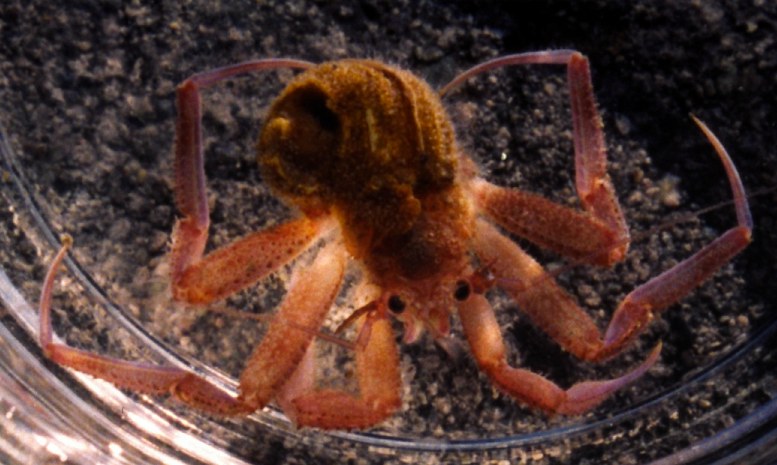 |
| Phylum Arthropoda
Subphylum Crustacea Class Malacostraca Subclass Eumalacostraca Superorder Eucarida Order Decapoda Suborder Pleocyemata Infraorder Anomura Superfamily Paguroidea Family Paguridae |
|
| Labidochirus splendescens, captured at 100 m depth in San Juan Channel | |
| (Photo by: Dave Cowles, July 2000) | |
How to Distinguish from Similar Species: The fully calcified carapace with dorsal spines, with the long legs and iridescent sheen make this species stand out.
Geographical Range: Arctic Ocean to Puget Sound
Depth Range: 3-412 m depth
Habitat: Open mud or sand bottoms
Biology/Natural
History:_Often
carries a
shell barely large enough for its abdomen. Often has stinging
hydroids
on its shell.
| Return to: | |||
| Main Page | Alphabetic Index | Systematic Index | Glossary |
References:
Dichotomous Keys:Coffin, 1952 (as Pagurus splendescens)
Hart, 1982
Kozloff 1987, 1996
General References:
Jensen,
1995
Scientific
Articles:
Seeb,
L.W., E. J Kretschmer, J. B Olsen, W. D Templin, K. C Jones, W. S
Grant,
2002. Development of microsatellite loci in red
king crab (Paralithodes
camtschaticus). Molecular Ecology Notes 2(2):
137-138
General Notes and Observations: Locations, abundances, unusual behaviors:
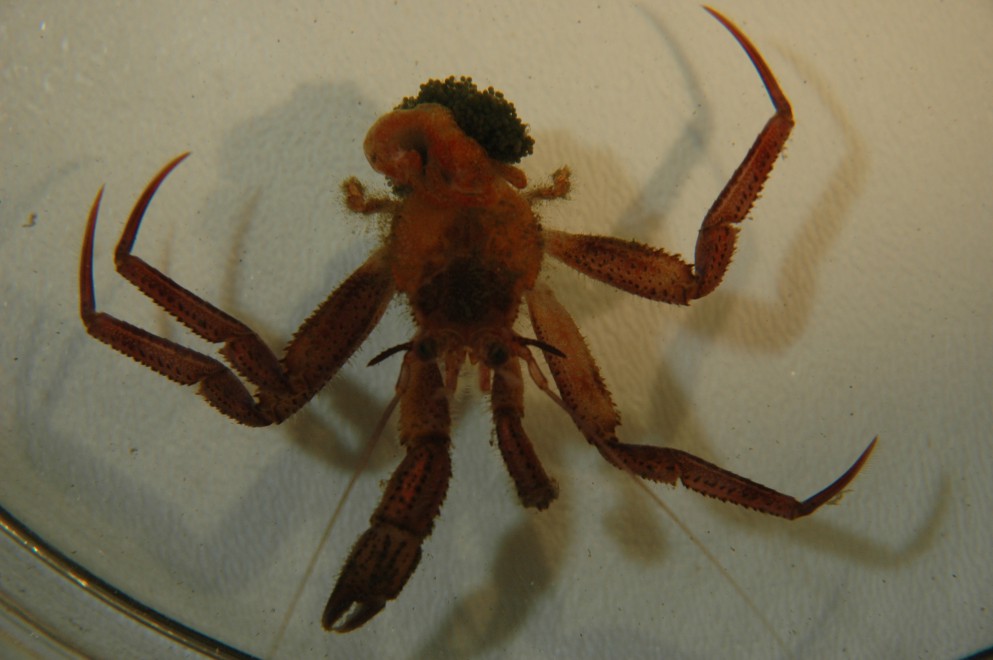
This photo is of a female carrying eggs, who abandoned her shell in
the seawater tank. Photo by Dave Cowles, July 2005
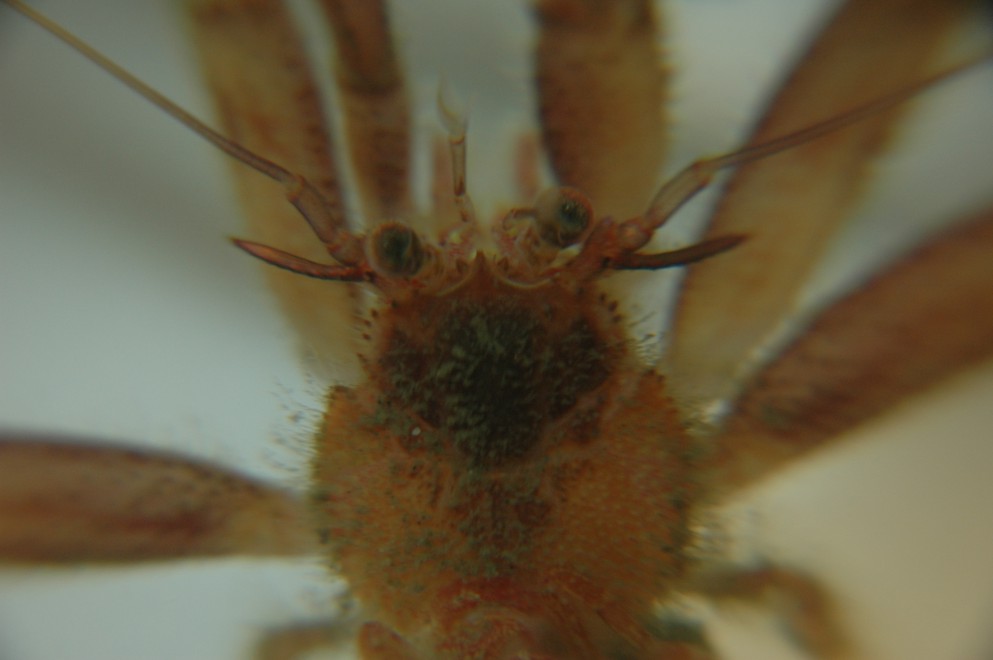
A closeup of the head and shield of Labidochirus splendescens.
Photo by Dave Cowles, July 2005
| On a beam trawl in San Juan Channel, 100-120 m deep, in July 2007 we found several Labidochirus splendescens living in shell-like formations that appeared to be composed entirely of the Hydroid Hydractinia sp. Hydractinia is known to frequently live on shells inhabited by hermit crabs, and to sometimes overgrow the shell. In these cases the hydroid has so completely overgrown the tiny shell that the shell can no longer be seen (but see the X-ray images). This shows that the hydroid is capable of a great deal of gastropod-like spiral growth around the hermit crab on its own. Digital X-rays compliments of Julie Kellogg, DDS and the Tietan Dental Clinic in Walla Walla. | ||
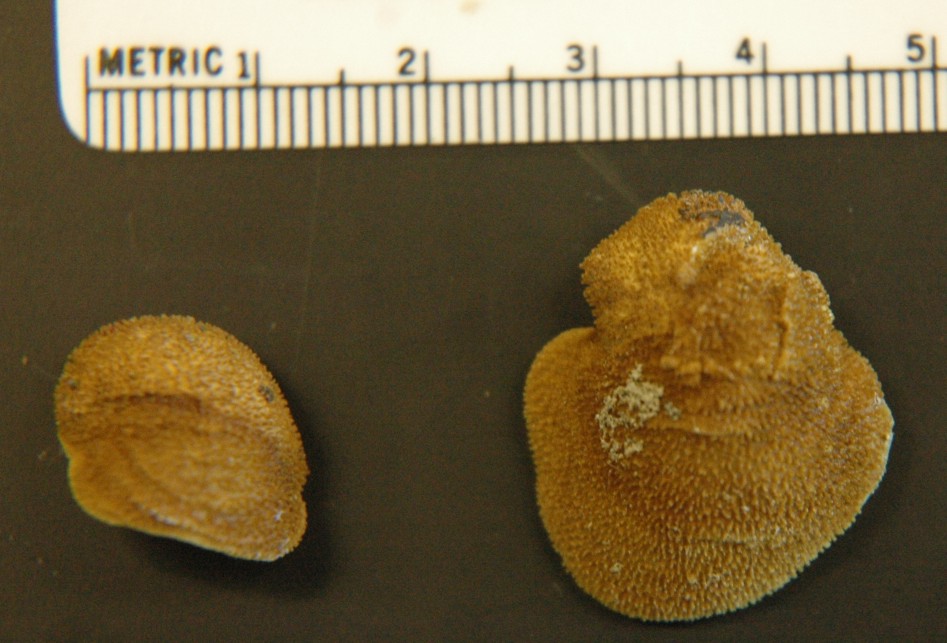 |
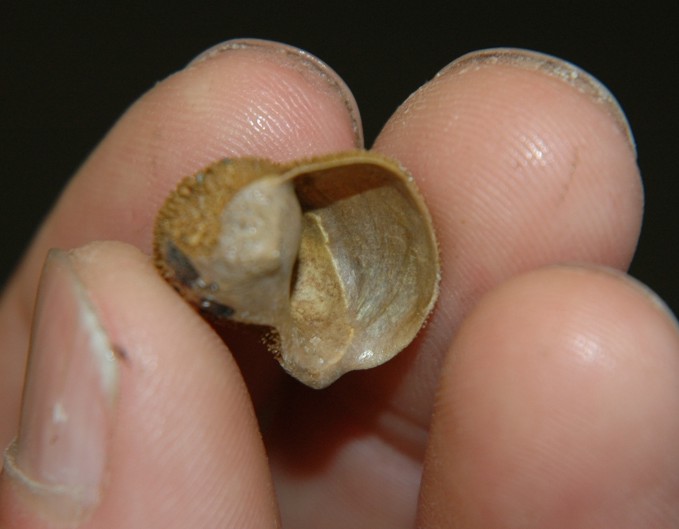 |
 |
| Two different Labidochirus were living in Hydractinia. The smallest Hydractinia was about 1.3 cm long and the largest was about 2.5 cm long. The dark marks on these Hydractinia are an artifact of removing the crabs from the shells. | Here is a view of the "aperture" of the smaller Hydractinia, seen on the left in the photo at left.. The hydroid is coiled like a snail but no hard snail shell can be felt even in the "spire" on the left side. | Here is the larger Hydractinia, seen at right in the photo at left. The outer "whorl" of the hydroid flares more widely than normally seen in a gastropod. No hard snail shell can be felt even in the "spire" on the left side. |
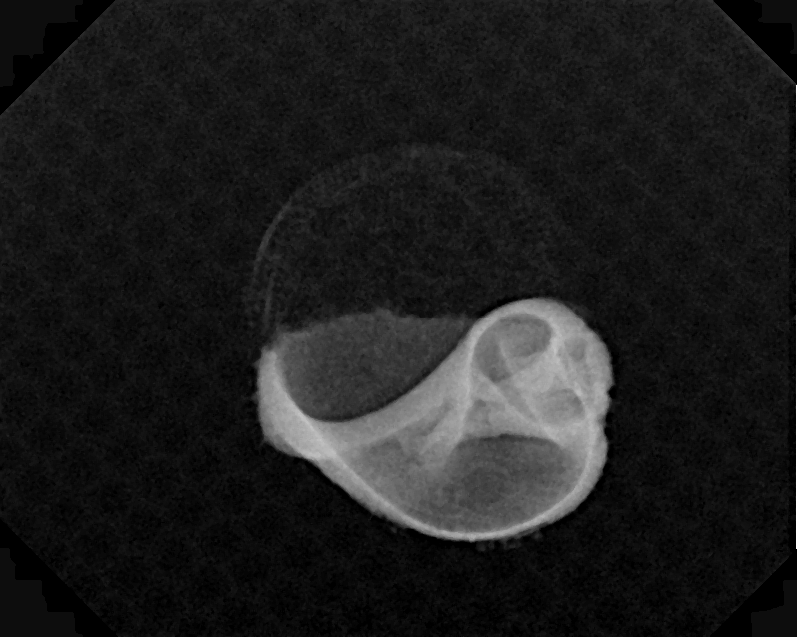 |
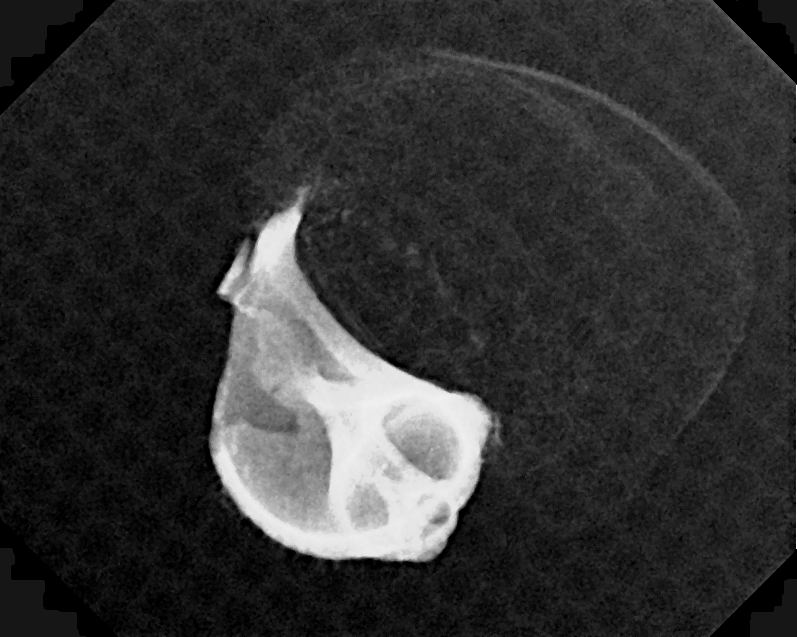 |
|
| This X-ray of the Hydractinia "house" above shows that the posterior half of the "house" is composed of a fragmented gastropod shell, while the front of the "house" is entirely Hydractinia. The shadowy outline is the edge of the Hydractinia colony. | This X-ray of the Hydractinia "house" above shows a similar arrangement, except that the fragmented shell makes up only a third or less of the "house". In some symbioses the Cnidarian is said to slowly dissolve the shell but this shell looks more fragmented than dissolved. I am guessing that it was fragmented when the hermit crab initially took up residence. If that is the case, the Hydractinia has made this shell a vastly superior dwelling than it initially was. | |
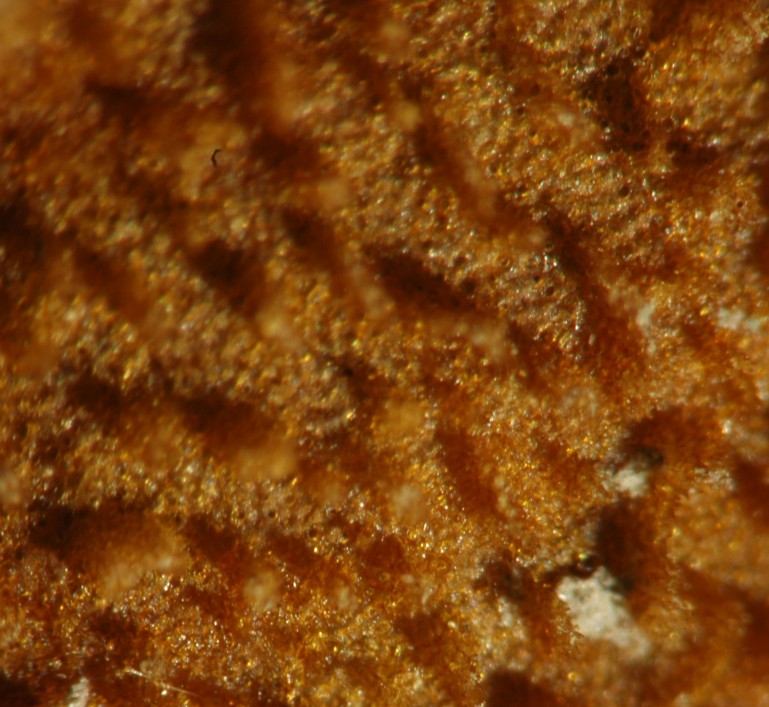 |
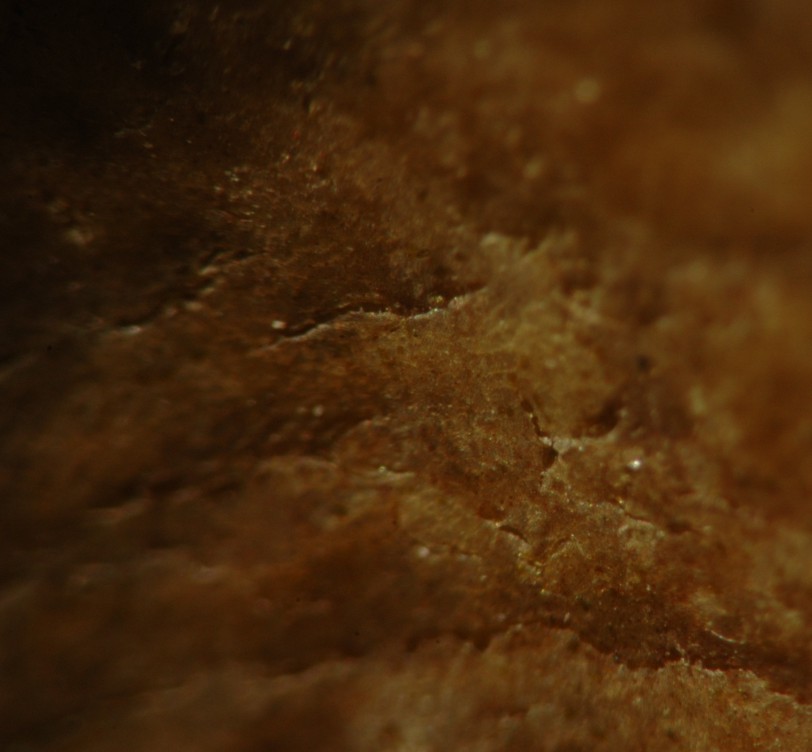 |
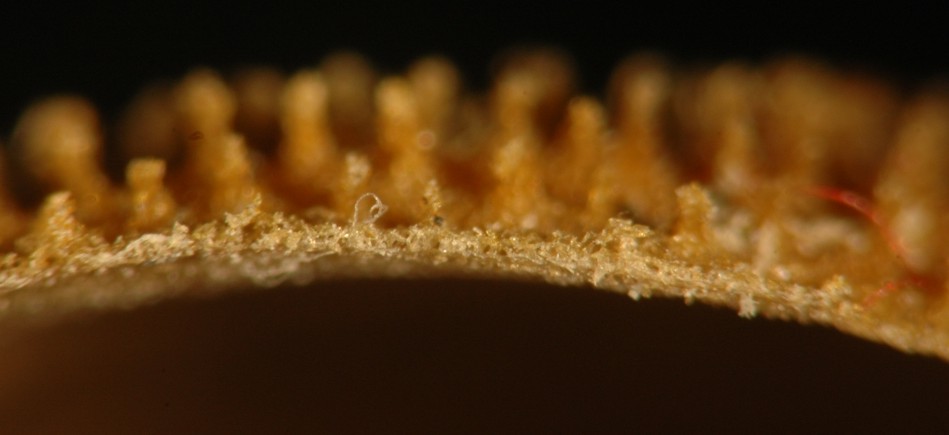 |
| Here is a closeup of the texture of the outside of the hydroid colony. The hydroid polyps are gone but the hydrotheca remains. This hydroid was not studied until several days after the crab was removed so I do not know if the hydroid was living when collected. | A view inside the "aperture" of the larger hydroid shows the smooth inner surface which would have contacted the body of the hermit crab. | A view of the edge of the "aperture" of the larger hydroid shows that the "house" is composed entirely of hydroid at least along the edge--there is no trace of a calcified shell. |
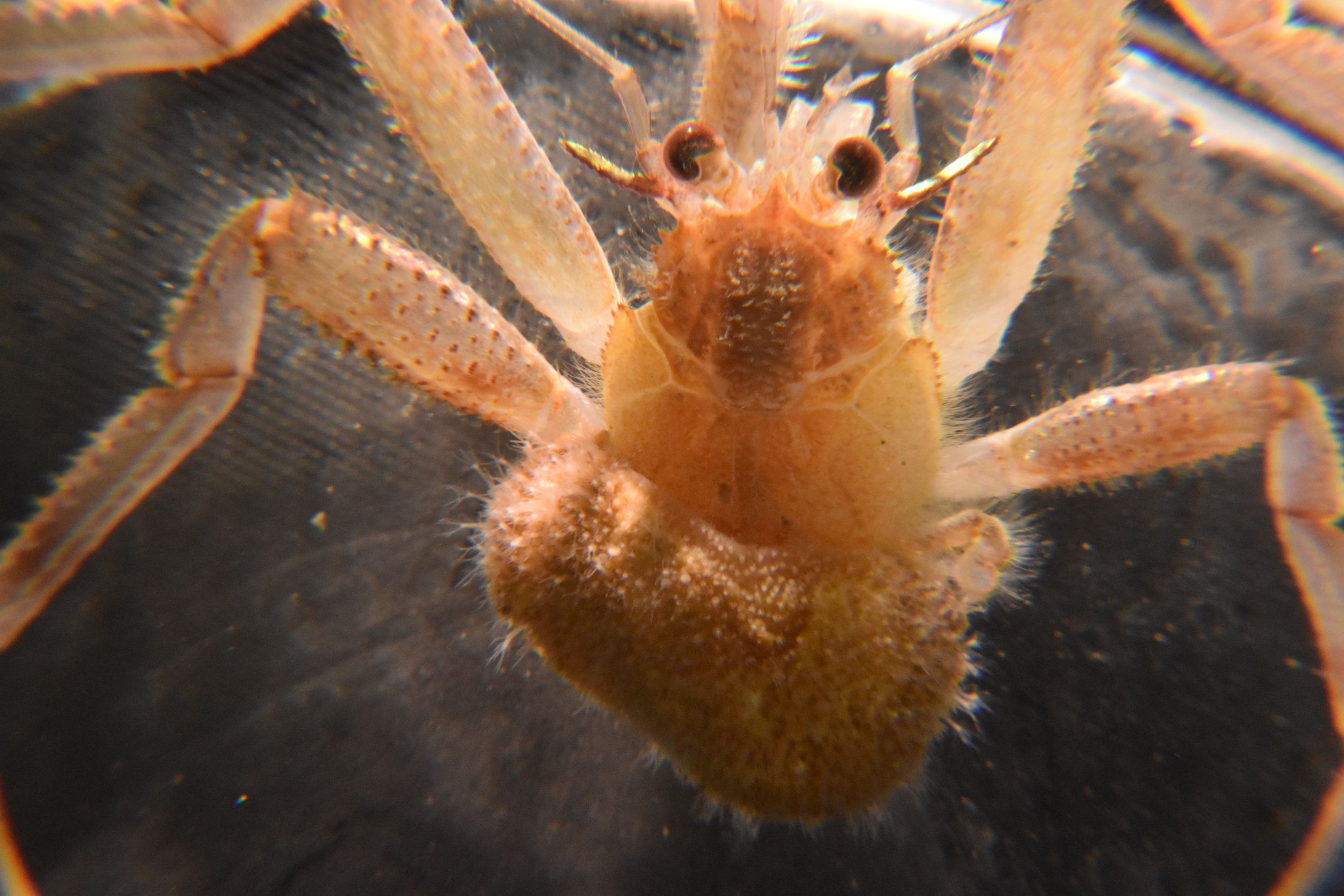
Another example of Labidochirus splendescens in a shell covered with Hydractinia. The Hydractinia has grown well past the original margins of this shell as well to form an enlarged, shell-like case for the hermit crab to live in.
Photo by Dave Cowles, July 2016
Authors and Editors of Page:
Dave Cowles (2005): Created original page